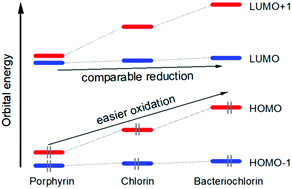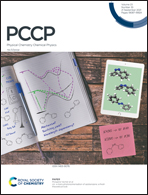A perspective on the redox properties of tetrapyrrole macrocycles
Abstract
Tetrapyrrole macrocycles serve a multitude of roles in biological systems, including oxygen transport by heme and light harvesting and charge separation by chlorophylls and bacteriochlorophylls. Synthetic tetrapyrroles are utilized in diverse applications ranging from solar-energy conversion to photomedicine. Nevertheless, students beginning tetrapyrrole research, as well as established practitioners, are often puzzled when comparing properties of related tetrapyrroles. Questions arise as to why optical spectra of two tetrapyrroles often shift in wavelength/energy in a direction opposite to that predicted by common chemical intuition based on the size of a π-electron system. Gouterman's four-orbital model provides a framework for understanding these optical properties. Similarly, it can be puzzling as to why the oxidation potentials differ significantly when comparing two related tetrapyrroles, yet the reduction potentials change very little or shift in the opposite direction. In order to understand these redox properties, it must be recognized that structural/electronic alterations affect the four frontier molecular orbitals (HOMO, LUMO, HOMO−1 and LUMO+1) unequally and in many cases the LUMO+1, and not the LUMO, may track the HOMO in energy. This perspective presents a fundamental framework concerning tetrapyrrole electronic properties that should provide a foundation for rational molecular design in tetrapyrrole science.

- This article is part of the themed collection: PCCP Perspectives


 Please wait while we load your content...
Please wait while we load your content...